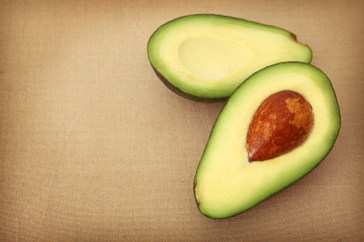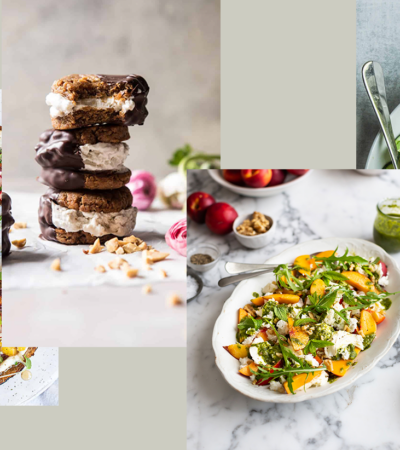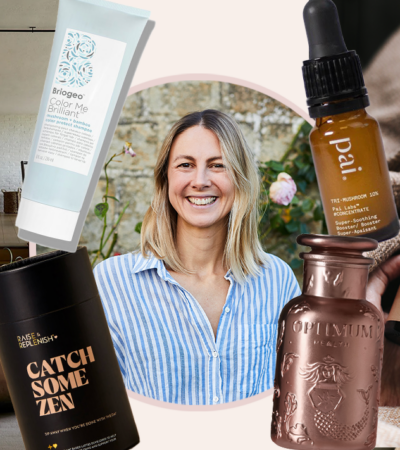words by Helen Carr
We are constantly bombarded with advertising for “low fat” products, sworn to make you lose weight but enjoy your favourite foods. But what if it is not the fat in foods that actually make you fat? And what if increasing your fat intake can actually make you slimmer healthier and happier?
We automatically associate the word ‘fat’ with being fat, the word that has struck fear into our hearts since the 1970’s when obesity was rising in the US and the “low fat” craze began. However, thirty years later levels of diabetes, obesity, IBS, and cancer have become higher and we have stopped eating fat. This is because the “low fat” options are laden with sugar. For example, a popular branded fruit flavoured fat free yoghurt has 19 grams of sugar in a 4 oz. pot. That is nearly a whopping 5 teaspoons of sugar. Sugar is the biggest killer, the white poison. It fuels cancer cells, and we are addicted. Unlike sugar, fat does not make us fat this is SUCH a misunderstanding as we need fat in our diet to absorb nutrients, fight off infection and for essential repair to our body.
We talk to Hayley Stafford-Smith who is training as a Nutritional Therapist and is determined to re-educate the world about fat, she discusses the benefits of a full fat diet and how it can make you glow!
Why do you think there is such a misconception about fat?
I think the diet plans of the 80s, 90s and 00s have a lot to answer for. These approaches vilified the ‘calorie’ and because high fat foods tend to be larger sources of calories fat was, and still is, seen as bad. In my opinion these diet plans, which are often filled with hidden sugar, are a primary cause of (rather than solution to) the UK’s weight problem. Low calorie ‘diets’ tend to discount nutrition. Good fats are an important part of a nutritious diet and a nutritious diet supports life, promotes vitality and maintains healthy weight – no calorie counting required.
What is the difference between good fats and bad fats?
At this point I would like to quote Udo Erasmus from his ‘Fats that Heal, Fats that Kill’, a book I’d highly recommend.
‘The fact is that some fats are absolutely required for good health, while others are detrimental. Some fats heal and others kill. Whether a fat heals or kills depends on several factors: What kind of fat is it? How has it been treated – is it fresh, has it been exposed to light, oxygen, heat, hydrogen, water, acid, base or metals like copper and iron? How old it is? How has it been used in food preparation? How much was eaten? What balance of different fats do we get?’
In a nutshell the fat we consume can come from 3 sources:
1) Essential fatty acids
2) Saturated fats (natural animal fats including meat and dairy products)
3) Hydrogenated trans-fats (processed fats).
Needless to say that group 3 should be avoided like the plague (margarine is possibly one of the most dangerous and polluting things we can eat) whilst the rest of our fat intake should follow a basic 75 percent essential fatty acid, and 25% saturated fats rule.
Purists would advocate banishing group 2 altogether but for many reasons, including the fact that they can taste wonderful, I would not advocate this. Our cell membranes are made up of 50% essential fatty acids. The cells in our brains are made up of approximately 60% essential fatty acids. Therefore, it makes sense that these essential fatty acids dominate our fat intake!
What sort of foods should we eat that include these good fats?
Essential fatty acids include the omegas, particularly 3 and 6, as our bodies cannot manufacture these on their own. Omegas can be found in foods such as avocados, nuts, oily fish, seeds and certain oils such as olive, walnut and linseed. Essential fatty acids are liquid at room temperature and therefore, as you can imagine, pass smoothly round our system, in and out of our cells with ease rather than clogging our systems up, which is what gloopy saturated fats and hydrogenated fats do.
How do we get started with a good fat lifestyle?
So there is a quite a lot to consider but most of the UK are beginners at this approach to eating so I’d advocate sticking to the 75 percent essential fatty acids and 25 percent saturated fats, no hydrogenated fats rule and learn to walk before we can run. It’s good to really read the label of anything you buy and try to stick to fresh organic dairy, meat and fish. If you don’t know what it is, I’d avoid it.
As a nutritionist what foods are staple in your diet, and what do you think is a healthy diet?
I think that it’s important to map goodness over taste & enjoyment and I find that southern European diets do this effortlessly. Good food is beautiful when people are happy to be eating it; when it brings pleasure. The foods I probably consume most of are good quality bread, pasta, homemade when possible, lots of garlic, onions of all kinds, olive oil, salads, rice (white and brown depending on the dish, vegetables, potatoes, sweet and white, cheese, fresh and dried herbs, fish, well-sourced meat, beans, porridge, whole milk, pumpkin seeds and, seasonal fruit, and lots of water! Red wine and coffee also feature sometimes- remember that life is for living too and sometimes our minds need to indulge even if our bodies don’t!













